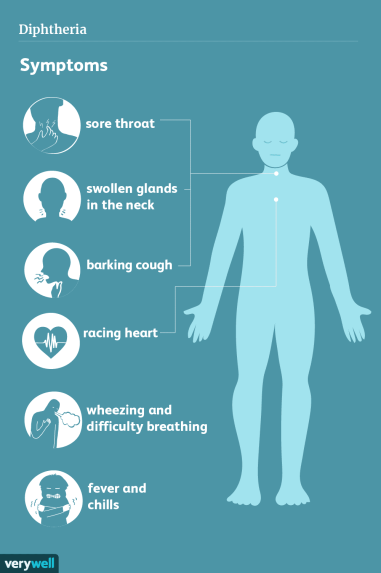Description

Copyright infringement not intended
Picture Courtesy: stock.adobe.com, www.britannica.com
Context: The recent diphtheria outbreak in Guinea, as reported by the World Health Organization (WHO), highlights the urgency of understanding this disease and its treatment methods.
Diphtheria
- Diphtheria is a serious and potentially fatal bacterial infection that affects the mucous membranes of the nose and throat, and sometimes the skin.
- It is caused by the bacterium Corynebacterium diphtheriae, which produces a toxin that can damage the tissues and organs of the body.

What are the Symptoms of diphtheria?
- The symptoms of diphtheria usually start 2 to 5 days after exposure to the bacteria. The most common symptom is a thick, grey membrane that covers the throat and tonsils, making it hard to breathe and swallow. Other symptoms may include:
- Sore throat and hoarseness
- Swollen glands in the neck
- Fever and chills
- Nasal discharge
- Cough and wheezing
- Tiredness
- Some people may have mild or no symptoms at all, but they can still spread the infection to others. These people are called carriers of diphtheria.
- Diphtheria can also affect the skin, causing ulcers covered by a grey membrane, redness, swelling, and pain. This type of diphtheria is more common in tropical climates and among people with poor hygiene and crowded living conditions.

What are the complications of diphtheria?
- Diphtheria can cause serious complications if left untreated or if treatment is delayed. The toxin produced by the bacteria can affect the heart, kidneys, nerves, and blood cells, leading to:
- Myocarditis (inflammation of the heart muscle), can cause abnormal heart rhythms, heart failure, and death.
- Peripheral neuropathy (damage to the nerves), can cause paralysis of the limbs, eye muscles, and diaphragm (the muscle that helps breathing), resulting in respiratory failure.
- Kidney problems can cause proteinuria (protein in the urine), kidney failure, and death.
- Bleeding problems, due to low levels of platelets (the blood cells that help clotting), which can cause bruising, bleeding gums, nosebleeds, and internal bleeding
- The risk of death from diphtheria is higher in children under 5 years old and adults over 60 years old.
How is diphtheria diagnosed?
- Diphtheria is diagnosed based on the physical examination of the throat and the laboratory tests of a sample taken from the throat or skin. The tests include:
- Throat culture: A swab is used to collect a sample of the membrane or fluid from the throat and grow it in a special medium to identify the bacteria.
- Elek test: A test that detects the presence of the toxin produced by the bacteria.
How is diphtheria treated?
- Diphtheria is treated with two types of medications:
- Diphtheria antitoxin: A medication that neutralizes the toxin produced by the bacteria. It is given as an injection as soon as possible after diagnosis.
- Antibiotics: Medications that kill or stop the growth of the bacteria. They are given orally or intravenously for 10 to 14 days. The most commonly used antibiotics are erythromycin and penicillin.
- People with diphtheria need to be isolated in a hospital, especially in an intensive care unit, to prevent further spreading of the infection and to monitor their condition.
- They may also need supportive care, such as oxygen therapy, fluids, pain relievers, and tracheostomy (a surgical procedure that creates an opening in the windpipe) if they have difficulty breathing.
- People who have been in close contact with someone with diphtheria may also need preventive treatment with antibiotics and vaccination.
How can diphtheria be prevented?
- The best way to prevent diphtheria is by getting vaccinated. The diphtheria vaccine is given as part of a combination vaccine that also protects against tetanus and pertussis (whooping cough).
- The vaccine is recommended for children at 2, 4, 6, and 15 to 18 months of age, and 4 to 6 years of age. A booster dose is recommended every 10 years for adolescents and adults.
- The vaccine is safe and effective, but it may cause some mild side effects, such as pain, redness, swelling at the injection site, fever, headache, and fatigue. Serious allergic reactions are very rare.


Conclusion
- Diphtheria is a serious and potentially fatal bacterial infection that affects the mucous membranes of the nose and throat, and sometimes the skin. It is a preventable and treatable disease, but it can still be deadly, especially in children and older adults.
Must Read Articles:
DPT3 IMMUNIZATION: https://www.iasgyan.in/daily-current-affairs/dpt3-immunisation
|
PRACTICE QUESTION
Q. What are the current challenges and initiatives in ensuring widespread immunization coverage in India, and how is the government addressing these issues to promote public health and prevent the spread of infectious diseases?
|

















